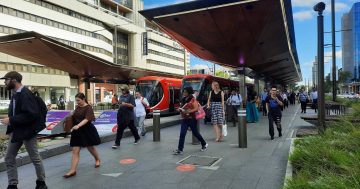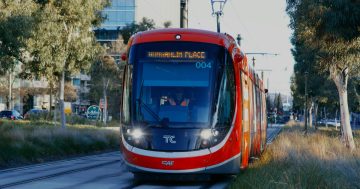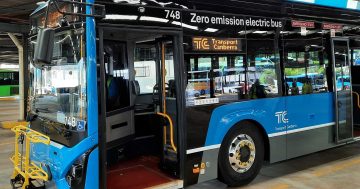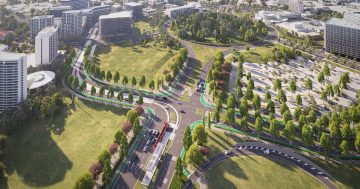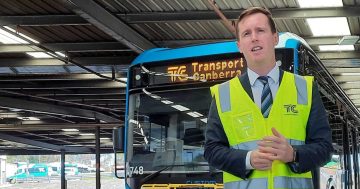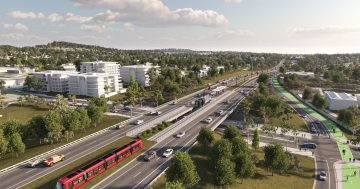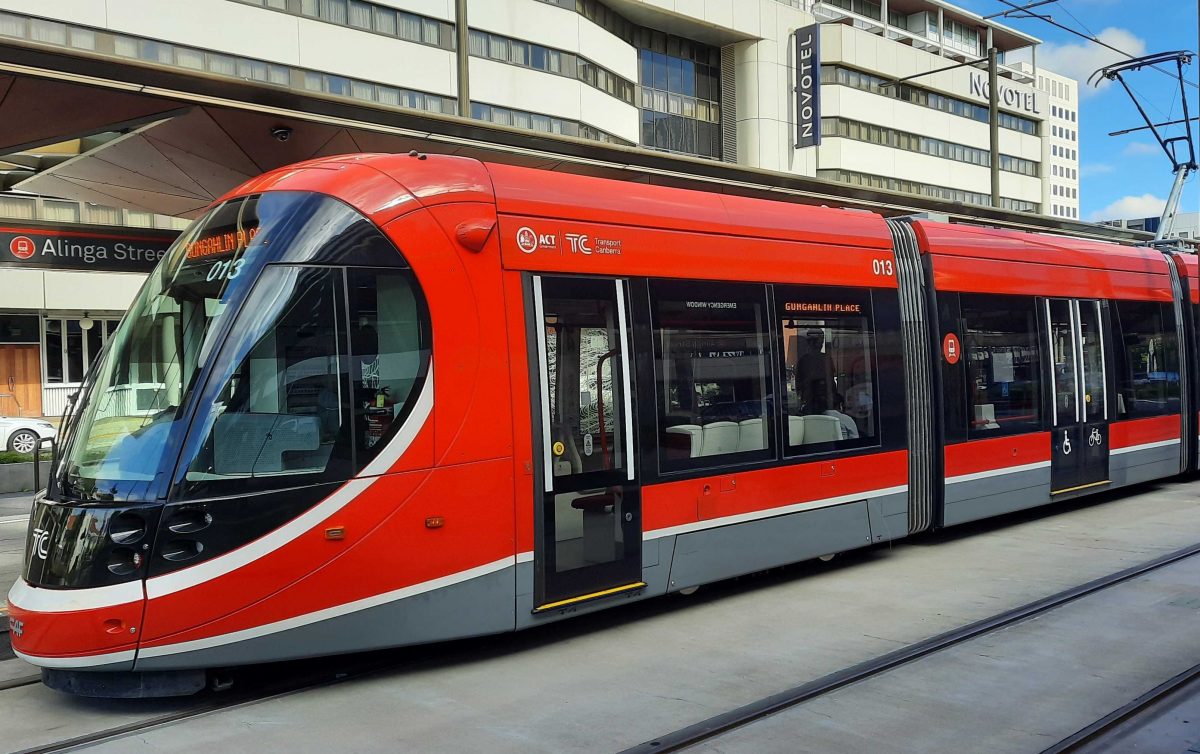
Will light rail continue to be rolled out after the election? It may depend on what the Canberra Liberals are offering. Photo: Region.
The future of public transport in a city where the car is still king looks like being the defining issue of next year’s ACT election.
Last week’s “good news” announcement that the ACT Government had signed a contract for the construction of the 1.7 km extension of the light rail line to Commonwealth Park has only intensified the renewed battle between the Labor-Greens coalition and the Canberra Liberals over whether light rail or buses should be the rapid transit solution for a growing city.
After several elections and the popularity of the Gungahlin to the city line, it had been thought that the light rail debate was settled, but the Liberals have seized on recent comparative studies favouring buses because they are cheaper, more flexible and would take less time to be implemented.
It also gives them a very big and demonstrable point of difference.
It’s an argument that appeals to cost-sensitive cities elsewhere in the world that are choosing Bus Rapid Transit systems over light rail.
But the Liberals are no nearer to telling Canberrans what their actual policy will be, saying it will be announced closer to the election.
Not helping the government’s cause has been the lengthy lead time for Stage 2A, which won’t take its first passengers until January 2028.
In 2019, the government split Stage 2 to Woden into two legs in order to at least get a section of the line started, given the complexities of getting across the Lake and through the parliamentary zone.
It will be almost a decade since that announcement before Canberrans can ride the rails to Commonwealth Park.
Granted the pandemic did not help the cause, but the more the project has been pushed out, along with the lack of a timeline for the much bigger leg to Woden, the easier it has been for doubts to grow.
It also hasn’t helped, given the unknown but undisputed high cost, that the government is unable to provide a Stage 2B business case, and now even the route is uncertain.
The government remains committed to light rail as part of a multi-modal public transport system, arguing it is not an either/or situation and that light rail can carry more passengers at one time than buses and is a more effective mass transit mode.
It says buses will just not be able to do the required job as the city’s population grows beyond half a million in the coming decades and will need a mass transit network to shift people to public transport to avoid chaos on the roads.
Light rail is also segregated from other traffic, allowing buses to be removed from major roads to ease congestion.
But modern bus systems also can use dedicated thoroughfares with right of way, just without tracks, and have multiple “carriages” like light rail to boost capacity.
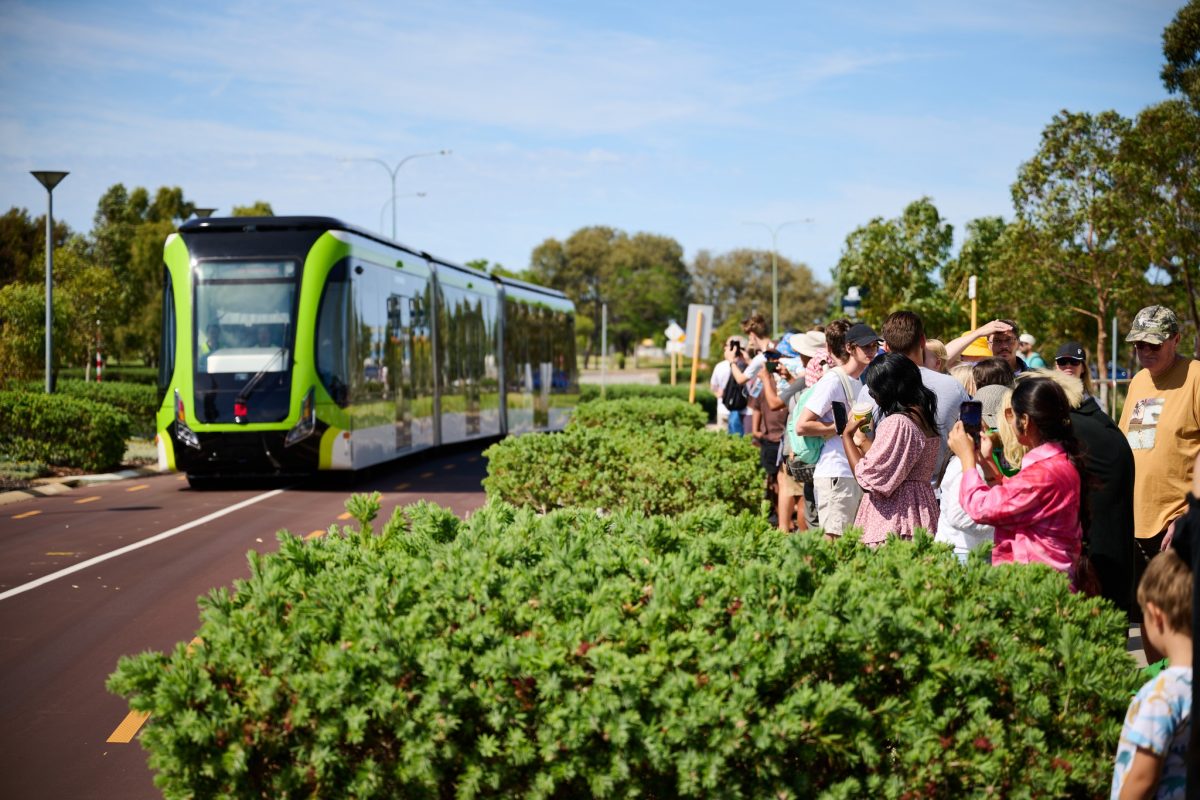
Passengers wait to board the City of Stirling’s trial trackless tram on a community day last month. Is it on the Liberals’ mind? Photo: Facebook.
The City of Stirling in Perth is trialling a Chinese-made electric trackless tram, which does not look dissimilar to light rail vehicles but runs on rubber wheels. But this untested technology weighs a lot and can damage road surfaces, as well as being wider than a light rail vehicle and needing more space.
Whatever the Liberals are planning, any workable bus system will still require separate corridors along medians or elsewhere to be secured. Any notion that an increasingly busy road system can tolerate more buses is fanciful.
The initial cost of a bus system would obviously be less than light rail, which requires the supporting infrastructure of tracks and overhead wires, although wire-free sections will be part of the Canberra network.
However, light rail and its vehicles are seen to be more cost-effective over time and require less maintenance.
The Liberals won’t tear up the contract for Stage 2A but the Woden leg, which it estimates will cost $3 billion, and future stages won’t happen on its watch. They will stress the cost difference between a bus system and light rail, and the savings for taxpayers and the budget.
But the unknown factor is just what the Commonwealth will contribute, having already put $344 into Stage 2A.
The government argues that it is building a network that will serve the city for the long term and needs to be done before population and urban infill grows.
It also sees light rail as a public transport solution and part of an overall urban development approach in which urban villages and jobs spring up along corridors and around stops.
That can still occur with a bus system, but light rail’s oft-criticised fixed nature provides more certainty.
Buses can also be electric so the emissions and clean air questions are not up for debate.
But the light rail versus buses argument is neither simple nor straightforward, relying on many variables, including how costs are calculated, the urban context of each city weighing its options and individual preferences. What may be right for one may not be best for another.
The government has been busy getting ink on a Stage 2A contract, and next year, the focus will shift to negotiating the many approval hurdles for Stage 2B. It has had little time to restate its position on light rail.
At the same time, the Liberals will no doubt step up their rhetoric and arguments against light rail and, at some point, offer their alternative transport vision.
The government will need to accept that the debate has been reignited and vigorously prosecute the case that light rail is in the best long-term interests of Canberra if it is to counter a resurgent Liberal opposition staking much of its election hopes on Canberra becoming disillusioned with the tram and the government promoting it.
The outcome of the election may hang on it.












